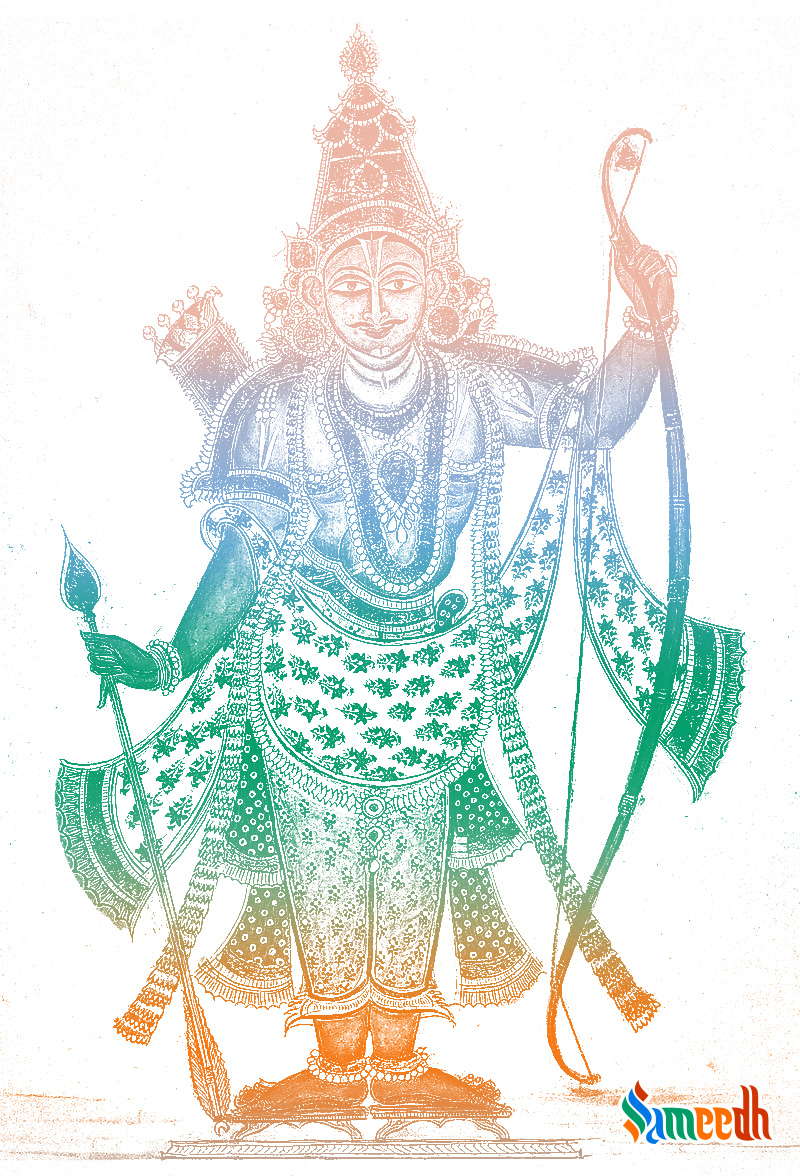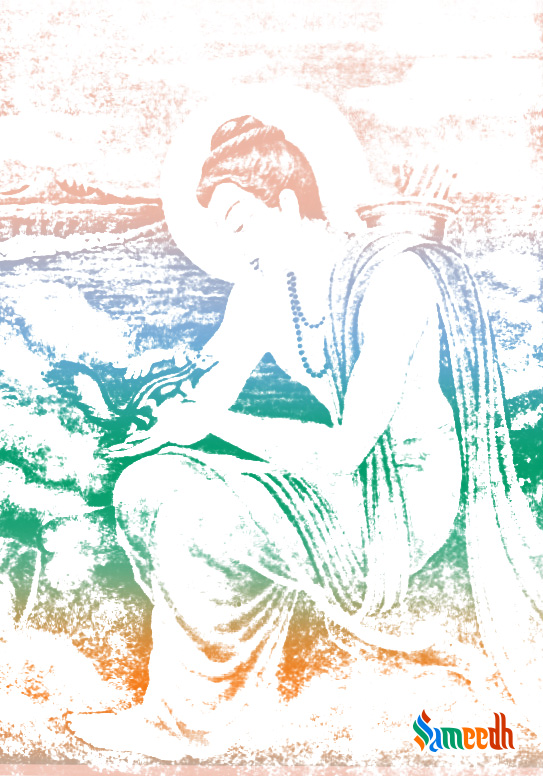The hero of the Indian epic Ramayan and his greatness.
 Lord Ram with arrows; Image Source: British Museum
Lord Ram with arrows; Image Source: British Museum
Lord Ram, short for Ramchandra, is renowned for this virtuous personification of morals, faith in dharma, religion and justice, truthfulness, chivalry and someone who firmly abides by the rules. Ram is honoured for valiantly fighting and defeating Ravan, the demon king of Lanka, prevailing good over evil. He hails from the ancestry of lord Surya, the Sun, which is why the name Suryavanshi is used for him. One of the famous titles given to him is that of Maryada Purshottam, meaning the most ideal person who will maintain the superiority of dharma. This also translates to the best of men and poses as a benchmark for other men. He is always found draped in Saffron garments, the colour symbolising Hinduism.
Origins
Ram was born to parents king Dashrat of Ayodhya and Kaushalya. It is believed that he is the seventh divine avatar or reincarnation of lord Vishnu, the Hindu deity of creation. His birth is celebrated as Ram Navmi, as he was born on the ninth day of the Chaitra or lunar month. His father had two other wives which bore the royal family 3 more princes. Bharat was the son of Kaikeyi, Laxman and Shatrughan were sons of Sumitra. Laxman was Ram’s closest brother, companion and one of his biggest supporters. He follows his elder sibling for the 14 year old exile into the forests and plays a crucial role in the Indian epic of Ramayan.
Sita’s Abduction
When the trio was wandering in the forests, they used to stay in huts made by Laxman. It was during the tenth year of exile when they reached Panchvati, a place on the banks of river Ganga. This place was known for its high concentration of demons. And naturally, they encountered one by the name of Surpankha, the younger sister of Ravan, chief of Lanka. This demoness was enamoured by the good looks of Ram and Laxman and went about seducing them. Her provocation tipped to the point of harassment for the brothers when she expressed her desire to further marry them too and upon Ram’s disapproval, she threatened Sita. Laxman refused to take such insults and disrespect sitting down and shot Surpankha’s nose with his arrow. A distraught Surpankha went wailing to her elder brother and he took it upon himself to avenge her by abducting Ram’s wife.

Painting of Lord Ram With Squirrel; Image by Ms Sarah Welch
A well-created trap in the form of an elaborative plan was laid around Ram’s hut. A golden deer with endearing features passed across it, catching Sita’s attention. She asked her husband to fetch the animal for her and he obediently left to follow
her wish, instructing Laxman to take care of Sita. The deer was just a way to get Ram away from Sita and when he finally pierced an arrow through the deer, it cried in a voice similar to that of Ram’s. This worried Sita deeply and although Laxman had faith in his brother’s vigour, he was asked to go look for him. Before leaving, Laxman chalked up a line or rekha, around the hut to protect Sita and firmly told her to not step out of it. Soon after Laxman left, Ravan himself disguised as a sage walked upto Sita and convinced her to cross the Laxman rekha. He immediately grabbed her and took her away to Lanka, resulting in a battle
Ramayan
This Indian epic of Ramayan, meaning the journey or progress of Ram, takes place following the abduction. Ram, along with Laxman, Sugriv, the king of monkeys and his army and Hanuman, a vanar, monkey who was Ram’s biggest devotee travel south towards Lanka to vanquish Ravan and bring Sita back. This war unfolds the various reasons why Ram is followed as the supreme deity of righteousness, courage, energy, compassion and power. Ram killed Ravan, proclaiming the evident victory of right over wrong, light over darkness.
Even Swami Vivekananda praised Ram by saying, “Ram, the ancient idol of the heroic ages, the embodiment of truth, of morality, the ideal son, the ideal husband, the ideal father, and, above all, the ideal all, the ideal king, this Ram has been presented before us by the great saint Valmiki” as he was a devout follower of this idealistic Hindu god.